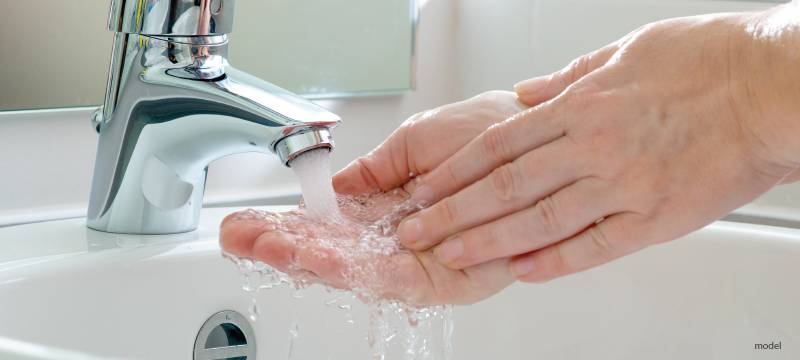How To Treat A Minor Skin Burn

Note: the following tips are for treating minor first degree burns. Individuals with more serious burns should consult a medical professional in person.
Dealing with a minor burn? Here are some steps for treating a mild burn on the skin.
1. Determine the severity of the burn.
Burns are classified into three categories, depending on their extent:
- First degree burns are the most minor type of burn as they only affect the top layer of skin. This type of burn results in light to moderate pain and swelling. This type of burn only affects the superficial layer of the skin called the epidermis.
- Second degree burns are more intense and result in more damage to the skin compared to first degree burns. Second degree burns produce blisters and typically cause the surrounding skin to turn white when it is pressed upon. This type of burn affects deeper layer of the skin called the dermis.
- A third degree burn is a major injury which affects all layers of the skin. Third degree burns can make the skin look brown, black, or white. One indication of a third degree burn is that damage to nerves can cause the affected area to feel numb. This type of burn will not heal without medical intervention.
2. Remove tight jewelry and clothing
Quickly remove any clothing or jewelry near the burn site. This will prevent any further damage to the burn area that might be caused by friction or rubbing. By removing any source of constriction you’ll allow more blood to flow to the burn site, thus speeding up the healing process.
3. Apply Cold
Rinse the burn under gently running cold water or use an ice pack or cold compress. Do not apply the ice or compress directly to the burn as that can further damage the skin, make sure you have a soft, non-stick cloth to use. Make sure the burn has completely cooled before applying any ointments (including “home remedies”), as these can actually cause the heat to dissipate more slowly.
4. Take a pain reliever
Most pain can be managed with a simple over-the-counter pain reliever such like aspirin or ibuprofen. Simply use as directed until the pain subsides.
5. Cleanse the burn area and apply a healing ointment
To prevent infection, gently wash the burn area with soap and water and remove any foreign debris. After thoroughly drying the area, apply an antibiotic such as Polysporin or simply use Vaseline or Aquaphor, which will speed up healing. Aloe vera can also be used to sooth the area. Other ointments are available from your physician that may speed up healing and prevent infection as well.
6. Avoid “home remedies”
You might have heard of home remedies like egg whites, butter, or tea as “miracle” solutions for healing burns. These myths are not scientifically proven to help and in many cases can even make burns worse or lead to infection.
7. Watch for infection
Over the next few days look out for signs that the bun area may be infected including:
- Changes in the color of the wound (such as green)
- Foul odor from the wound
- Swelling and redness that continue to expand around the area
- Warmth or tenderness in the area that worsens
- Fever
If you notice any of these signs, seek medical attention right away.
8. Don’t scratch
Itchiness is one of the most common complaints people have as a burn heals. Never scratch a burn area! Instead, apply an aloe vera or petroleum based ointment to sooth any discomfort caused by itching.
If your minor burn does not improve or heal after several weeks, seek help from a physician. And remember, as your wound heals, it is very important to protect from the sun to prevent discoloration and scarring! Sunblock, especially those that are zinc and titanium-based are safe to put on burns as they are healing.
Disclaimer: The contents of the Westlake Dermatology website, including text, graphics, and images, are for informational purposes only and are not intended to substitute for direct medical advice from your physician or other qualified professional.

Thanks so much for the aquafor it heals burns amazingly.
Great Jennifer, glad to hear that you are healing up!
–WD Staff
Yes!!!!
I have recently gotten a burn blister about 3 days ago now and I’ve noticed that it has turned red. It isn’t a big blister, smaller than a dime. The pain is subtle and doesn’t affect my daily life. It is still soft to the touch and I’ve just started applying petroleum jelly and Eucerin. Is this part of the healing process or should i be at least a bit concerned?
Hi Monday,
Thanks for reading our post and sharing with our community. I would say to continue to monitor and make sure to keep the area clean and dry. Blisters can react in the manner you describe. If you don’t see improvement after a few more days you may want to go in and see your dermatologist or primary care physician.
We hope that helps!
WD Staff
I had no idea that you should refrain from applying ice to a burn since it can cause more damage to your skin. I’ve been doing that for years!!!!!
I got a super bad bacon grease burn across my hand and it happened around 9pm and it was in constant pain. I applied aquaphor and put bandaids over with a cold rag and the next day it feels 1000x better! I highly recommend this if anyone had the same problem.
I had no idea that putting ice on a burn can make it worse by damaging your skin even more. I appreciate the information you provided.
Good point on avoiding home remedies and myths when it comes to treating burns. If you burn your skin, you should probably go to a medical clinic as soon as possible!